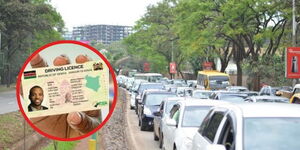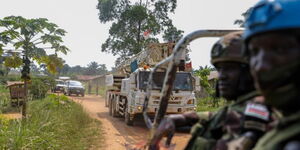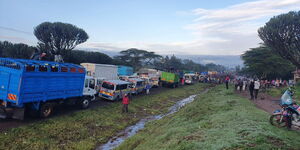Rachel Stepanek, a fashion designer based in the United Kingdom, made a surprising decision to quit her job days after visiting Kenya and traversing the streets of Nairobi.
Stepanek was distressed after finding the clothes she had designed in London were sold in the streets of Nairobi's Central Business District (CBD) as second-hand clothes (mitumba).
She was also astonished at the poor state of the clothes, which were being discarded in the disguise of being sold at affordable prices.
"Whoever bought this one (a cloth) must have tired of it so quickly. They had chucked it out after a couple of wears. Now it lay at my feet in a dusty African street on the outskirts of Nairobi," she stated in an article she wrote for the Daily Mail on Wednesday, August 9.
The top-notch designer used to work for a British fashion brand producing women's clothing, shoes and accessories.
Stepanek is credited with designing various forms of clothing during her 30-year career in the fashion industry ranging from dresses, blouses, knitwear, occasionwear and sleepwear. Stepanek has also dressed various celebrities in the entertainment industry.
Following her experience in Kenya, the fashion designer conducted research on the mitumba industry, which generates billions in revenue and has employed thousands of Kenyans directly and indirectly.
She ascertained that the sector was rapidly growing and that she had played a part in its development. Stepanek further realised that her consumers were in a rush to purchase items they would wear once before getting rid of them through donations.
The high demand in Kenya also contributed to this trend, prompting donations to rise annually. A study by the Institute of Economic Affairs and Mitumba Consortium Association of Kenya in 2019 disclosed that 91.5% of households buy second-hand clothes worth Ksh1,000 and below.
"What doesn't sell gets dumped in landfills, burnt, or chucked into the Nairobi River. Most of these clothes will contain microplastics that will end up in the soil and ocean," she added.
While returning to King's Road in London, she contemplated how she would remain in the fashion industry while mitigating the environmental impact it imposes on the planet.
She also confided to her husband how deeply disturbing the sight was, and he prompted her to take affirmative steps to address the issue rather than assuming it.
Stepanek took it upon herself to explore the anticonsumption movement, which urges consumers against excessive buying and consumption of items.
Anticonsumption is motivated by buyers reducing the rate at which they purchase goods and services. Other practices include refusing to buy new items, reusing other items like mitumba or extending the shelf life of a product.
"I attended lectures and conferences, followed campaigners on social media, and soon realised how complicated it is to try to be a responsible shopper," she reiterated.
As a result, Stepanek decided to quit her job, explaining that she could no longer be part of the chain that caused the problem.
Traders at Gikomba Market, who spoke to Kenyans.co.ke on the condition of anonymity, concurred that the quality of mitumba has also reduced.
"Importers sell the bales to us expensively, but the items inside are low-quality. For instance, you can buy a bale at Ksh18,000 and end up only selling half of it at a loss.
"The half can stay at the shops for days without being purchased, and traders thus resort to dumping them at a nearby river or ferried to and sold in Malaba in Busia and other towns outside Nairobi," one Gikomba seller told Kenyans.co.ke.
One of the issues that was raised was that traders cannot open the bales at the warehouses to peek inside and select high-quality clothes.
"Once you select a bale, like jackets, sweaters or trousers, you all rush to your shop to sell. We thus can't tell which bale is good or bad. Some are oversize, and we thus incur extra costs by paying tailors to resize them," the trader added.
They lamented that efforts to consult the Ministry of Trade and other government authorities were futile as cartels had reportedly infiltrated the sector, barring the traders from openly raising their grievances.
A report by Clean Up Kenya and Wildlight for the Changing Markets Foundation (CMF) revealed that European countries dumped 37 million items of mitumba in Kenya per year.
CMF found that Germany, Poland, Hungary, United Kingdom, Hungary, Italy, Belgium, France, Ireland and Estonia accounted for 95 per cent of mitumba exports averaging over Ksh3.3 trillion.
Further, the Mitumba Consortium Association of Kenya (MCAK) data showed that the Kenyan government earned a total of Ksh15.85 billion in taxes from the Mitumba sector in 2021, the highest in the East African region.
In the report, the Democratic Republic of Congo followed Kenya with Ksh11.1 billion, followed by Uganda (Ksh11 billion) and Tanzania with Ksh10.1 billion.
According to MCAK chairperson Teresia Wairimu, the report showed how important the mitumba industry is to Kenya and East Africa at large.












